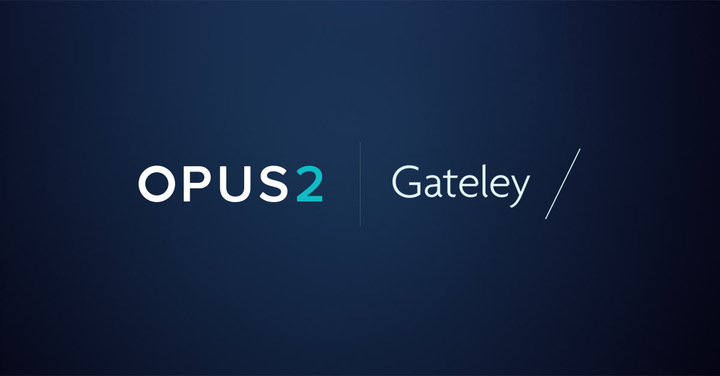Law firm litigation departments are facing rising caseloads, expanding data volumes, and mounting pressure to increase profitability. To navigate these challenges and thrive, they must adapt their approach to address emerging trends and client expectations. New litigation research from Ari Kaplan Advisors explores these themes, offering perspectives from litigation leaders.
While you can download the 22-page report to explore the in-depth expert analysis and data, here you’ll find the top seven stats you need to know as you build your strategy for 2025.
1. 93% reported that the volume of data they manage for an average dispute is increasing
As data volumes grow, litigation teams are feeling the pressure. Sixty percent of respondents reported that this presents challenges. Their main concerns include:
- Rising costs and risk
- Difficulties finding key documents
- Increasing case complexity and new data types
For teams planning their 2025 strategy, consider if your current processes and tech stack can adapt to meet the challenges posed by exponential data growth. Following best practices for data management supported by scalable technology will be critical to meeting client expectations and managing risk.
2. 83% of litigation teams expect their caseloads to rise
Rising caseloads are a reality for most litigation teams, with firms anticipating varying degrees of growth. While some expect a modest year-over-year increase of five percent, others are preparing for an increase of more than 20%.
The litigation research indicates that even firms that don’t foresee a higher number of cases believe their average case will grow in complexity and scale. These trends underscore the importance of proactive planning to manage increasing demands. Litigation teams must focus on optimizing resources, refining workflows, and leveraging technology to ensure they can handle larger, more intricate dockets without compromising quality or efficiency.
3. Nearly 40% of firms are using case management solutions more than six years old
Outdated case management systems are a significant pain point for many firms. These tools are often difficult to update and fail to meet evolving client needs. As one respondent put it: “[Our solution] is outdated, clunky, not user-friendly, and does not perform easily. Our lawyers would get the same benefit with Excel.”
It’s no surprise, then, that 67% of respondents expressed a desire to upgrade their systems. For those evaluating new solutions, the biggest considerations are:
- Ease of uploading documents, creating video clips, and developing timelines
- AI-assisted transcript summaries and annotations
- Seamless collaboration and integration with other platforms
- The ability to create a case lifecycle strategy
- Excellent customer support and service
For litigation teams, relying on outdated technology can hinder efficiency, limit collaboration, and leave firms at a competitive disadvantage. Investing in updated, purpose-built platforms is increasingly essential to meet growth goals as litigation becomes more complex.
4. More than 66% of law firm litigation applications are now cloud-based
In 2025, the ongoing migration to the cloud will continue. The litigation research shows that the benefits cloud-based applications offer are driving the change. One participant summarized the move saying, “It has become more cost-effective to move to the cloud, and law firms accelerated their move when the lawyers became more comfortable with confidentiality and security.” Other notable benefits include:
- Enhanced flexibility
- Frequent and seamless updates
- Improved scalability
The flexibility of the cloud also supports better records management and enables remote collaboration, which is increasingly demanded by clients. As one research participant put it, “We have clients asking to integrate and collaborate, which is easier and often only possible in the cloud.” For litigation teams, embracing cloud solutions is not just a convenience—it’s becoming a necessity to meet evolving expectations, stay competitive, and future-proof their operations.
5. While 97% believe their firms invest adequately in technology, only 30% rate their innovation efforts as industry leading
Many litigation teams believe they are adequately investing in technology, yet only a fraction rate their innovation efforts as industry leading. This disconnect highlights a tendency for firms to wait to adopt new technologies until they see others take the lead. However, this wait-and-see approach can create an innovation gap that’s hard to overcome, especially as GenAI transforms the way litigation teams manage their work and becomes a competitive advantage.
Barriers such as time constraints, lack of budget, and slow adoption are often cited as reasons for this hesitation. As one respondent explained, “The challenge is selling innovation to internal stakeholders and securing buy-in from them.” Litigation teams that delay innovation risk falling behind, making it essential to take a more proactive approach to technology adoption and continuous improvement.
6. 87% believe AI-assisted case management software provides a competitive edge
The majority of litigation teams recognize the transformative potential of AI-assisted case management tools. As one respondent explained, “Generative AI will essentially serve as a CliffsNotes for e-discovery, providing lawyers with more high-level insight and helping them create a more comprehensive strategy.”
While concerns about accuracy and transparency linger, the litigation research shows that in 2025 many firms see the risk of inaction as greater than the challenges of adoption. “People are getting nervous and want to use it because they are concerned about missing out,” noted another participant. For litigation teams, integrating AI into their workflows offers a way to enhance productivity, improve strategic decision-making, and stay ahead in an increasingly competitive field.
7. 100% of litigation leaders believe GenAI will have a significant impact on document analysis
Among the litigation research participants, some are already leveraging AI to streamline tasks, with one respondent noting, “It saves time summarizing transcripts and interrogating documents with natural language prompts rather than needing to identify search terms.” However, maximizing GenAI’s value requires applying it to the right use cases, ensuring it complements human expertise and gains traction among reluctant users. The research revealed the most promising GenAI use cases:
- Transcript management
- Chronology creation
- Case strategy
Highlighting GenAI’s potential to significantly reduce manual workloads one participant predicted, “The days of first-year or junior associates conducting a transcript analysis are over, and this type of work is best suited to generative AI.” To fully realize these benefits, litigation teams must ensure their approach augments existing workflows rather than disrupting them, ensuring alignment with the needs of both seasoned professionals and emerging talent.
Conclusion
Over the course of 2025, litigation teams must adapt to the rapidly changing landscape in order to thrive. The challenges of rising caseloads, increasing data volumes, and evolving client demands will require teams to rethink their approach to technology and innovation. From adopting AI-assisted case management solutions to embracing cloud-based systems, staying ahead of these trends is not just a matter of productivity—it’s essential to maintain a competitive edge.
The insights shared in this blog offer a glimpse into the future of litigation, but the full picture is even more detailed.
Armed with the latest litigation research, you can better understand the trends, challenges, and opportunities that will shape litigation in 2025, and start building a strategy that positions your team for success in the years to come.







